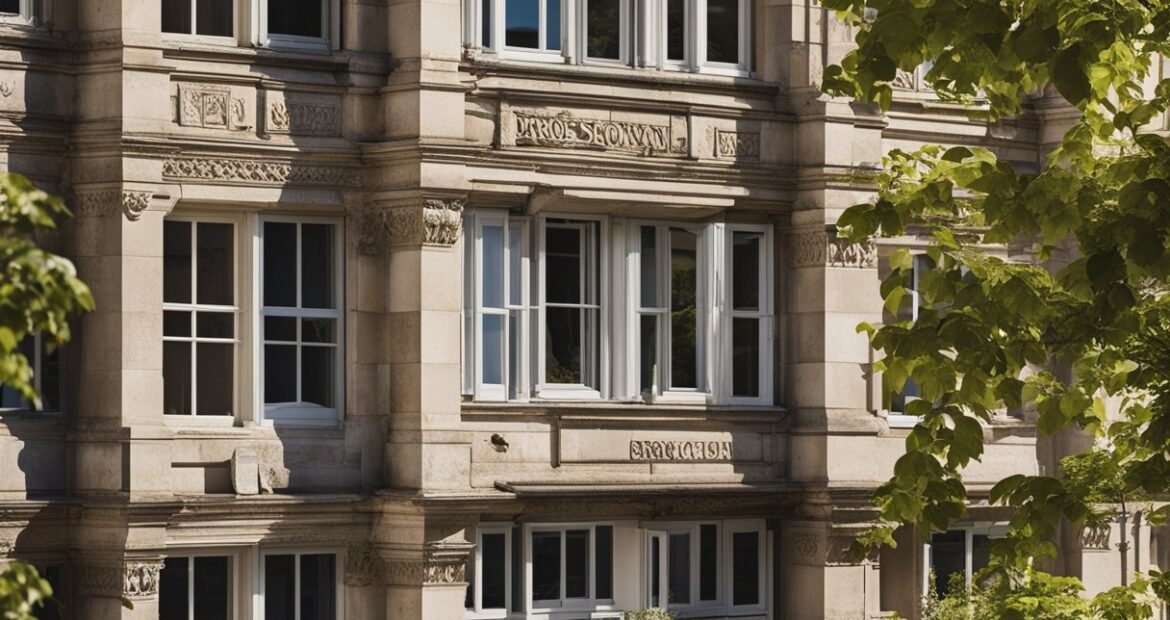The energy rehabilitation of buildings is a process that improves the energy efficiency of existing buildings, applying new technologies and adjustments in design and construction to reduce energy consumption and greenhouse gas emissions. This type of renovation not only has positive environmental implications, but also offers long-term economic benefits, such as lower energy bills and potential property appreciation.
Furthermore, interventions to improve energy efficiency can contribute significantly to the comfort and well-being of a building's occupants. The implementation of thermal insulation, the modernization of heating and cooling systems, and the installation of high-performance windows are examples of measures that can lead to a more stable feeling of comfort within living spaces, while promoting efficient use of the resources.
At a social level, energy rehabilitation can be a driver of change in the fight against climate change, encouraging the community to adopt more sustainable practices. Furthermore, the execution of these projects can generate employment, promoting the development of new professional profiles specialized in energy efficiency and renewable energies, which has a positive impact on the local and national economy.
Fundamentals of Energy Rehabilitation

Energy rehabilitation is essential to improve the energy efficiency of buildings and comply with current legislative requirements. This is a set of actions aimed at reducing energy consumption and optimizing the thermal and electrical performance of buildings.
Key Concepts and Benefits
Energy rehabilitation: It involves the implementation of improvements in the thermal envelope and in the air conditioning and lighting systems of buildings to reduce energy consumption. This translates into benefits such as reduced CO2 emissions, improved thermal comfort and reduced energy bill costs.
- Energetic efficiency of the buildings: Refers to a building's ability to use less energy to provide the same services, such as heating, cooling and lighting. This not only provides a reduction in economic costs but also a positive environmental impact.
- Energetic certification: It is an official document that indicates the degree of energy efficiency of a property. It reflects energy consumption and CO2 emissions by comparing them with reference standards.
Regulatory Framework and Regulations
- Technical Building Code (CTE): It is the Spanish regulatory framework that establishes the quality requirements that buildings must meet in terms of energy efficiency, among other aspects. The objective of the CTE is to guarantee the quality of the building and the protection of the environment.
- European Parliament: Has established directives affecting European Union member states, requiring measures to improve the energy efficiency of existing and new buildings. This has driven regulatory changes at the national level in favor of energy sustainability.
- Institute for Energy Diversification and Saving (IDAE): National organization that promotes energy efficiency and the use of renewable energy in Spain. Provides information, advice and help in financing energy rehabilitation projects.
Technical Aspects of Implementation

The technical implementation of energy rehabilitation involves the modernization of structural components and systems in the building to improve its energy efficiency and reduce consumption.
Improvements in Insulation and Facade
He thermal isolation refers to the use of materials and techniques that reduce heat transfer through the facade of the building. For example, insulation can be implemented in walls, ceilings and floors, using materials such as expanded polystyrene or mineral wool. These types of measures not only improve energy efficiency but also contribute to thermal comfort indoors.
Advanced Air Conditioning Systems
The air conditioning systems Advanced systems are key to optimizing the use of energy within buildings. The installation of high efficiency heat pumps, such as aerothermal, captures energy from the air and converts it into heating or cooling with much lower consumption than traditional systems. Furthermore, the control of these systems through home automation technology allows for more precise regulation tailored to the real needs of the building.
Incorporation of Renewable Energies
The inclusion of renewable energy focuses on the integration of solar panels and photovoltaic self-consumption systems for the production of electricity, and in the Thermal solar energy for the production of domestic hot water. The use of biomass, as a source of energy for heating, is also a viable option. These technologies not only reduce dependence on non-renewable energy but also reduce greenhouse gas emissions.
Economic Impact and Financing Opportunities
Energy rehabilitation in buildings leads to significant savings in consumption costs and offers multiple financing options. Owners and construction sectors benefit both directly and indirectly thanks to the aid and incentives available.
Savings in Consumption and Billing
The implementation of measures energy saving in buildings it significantly reduces resource consumption. This translates into a decrease in operating costs for owners, whether in the context of sale either rent. For example, the installation of advanced thermal insulation or efficient air conditioning systems can reduce electricity consumption by up to 30-50%, depending on the specific characteristics of the building and the technologies implemented.
Aid, Subsidies and European Funds
There are a series of tax incentives and subsidies available to support energy efficiency in buildings. At the national and regional level, governments offer programs that contribute to the coverage of costs initials. On the other hand, the European funds destined for sustainability and innovation provide significant financial means for rehabilitation projects. These include funds such as the Program Europe horizon and the Recovery Fund for Europe, NextGenerationEU.
- Tax Incentives: Deductions in personal income tax or corporate tax for making improvements in energy efficiency.
- Subsidies: Specific programs that can cover up to 30% of rehabilitation expenses.
- European Funds: Contributions that can be used to finance energy rehabilitation in various construction sectors.
Socio-environmental Benefits

The energy rehabilitation of buildings entails significant improvements for both the environment and society, placing special emphasis on reducing the carbon footprint and improving the quality of life of citizens.
Emissions Reduction and Sustainability
The implementation of measures in energy rehabilitation plays a crucial role in the reduction of CO2 emissions and others greenhouse gases that contribute to global warming. An energy-renovated building can reduce its energy consumption by up to 50%, which translates directly into a proportional reduction in emissions. The following improvements are specific examples:
- Thermal isolation: Improves energy efficiency, reducing heating and cooling demand.
- Clean energy systems: The use of solar panels and heat pumps can increase the sustainability by reducing dependence on fossil fuels.
Furthermore, energy renewal improves the Energy Rating of buildings, which favors the adoption of safety standards sustainable energy in the real estate sector.
Health, Comfort and Quality of Life
The benefits of energy rehabilitation extend beyond the environmental impact, substantially improving the quality of life of tenants and citizens. An environment with Thermal comfort Adequate nutrition is essential for physical health and well-being. Studies indicate that well-insulated homes with efficient air conditioning systems can reduce respiratory problems and allergies thanks to a more controlled and healthy indoor environment. Significant advantages include:
- Temperature control: Optimization of comfort thanks to a constant interior temperature.
- noise reduction: Improvements in acoustic insulation that contribute to a calmer and quieter environment.
These improvements in comfort and health are not only individual benefits, but also foster a happier and more productive society. Energy rehabilitation, therefore, is a transformative element in the lives of citizens at an individual and collective level.
Frequent questions
The energy rehabilitation of buildings is a process that optimizes energy consumption and improves efficiency. Let's address some common doubts about it.
What economic benefits does the energy rehabilitation of buildings offer?
Energy rehabilitation can mean reducing operating expenses by lowering energy consumption. In addition, it increases the useful life of infrastructure and can reduce maintenance demand.
How does energy rehabilitation contribute to the environment?
Improving energy efficiency reduces the building's carbon footprint due to less use of fossil resources. This implies a significant contribution in the fight against climate change.
What is the impact of energy rehabilitation on the comfort of buildings?
Thermal and acoustic comfort is improved with energy rehabilitation. Proper temperature regulation and reduction of external noise are key aspects that benefit.
How does the energy rating of a building affect its market value?
A better energy rating reflects greater efficiency, which can increase the market value of the property. Buildings with high ratings tend to be more attractive to buyers and renters.
What technologies are commonly implemented in energy rehabilitation?
Technologies such as thermal insulation, double-glazed windows, efficient heating and cooling systems and the integration of renewable energies are common in energy rehabilitation processes.
What incentives exist to carry out the energy rehabilitation of a property?
Governments and entities can offer tax incentives, subsidies or financial aid to stimulate energy rehabilitation. These incentives seek to make long-term investments in energy efficiency viable.

